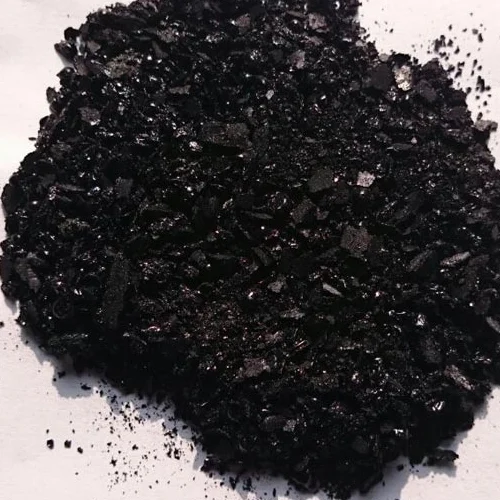Understanding Sulphur Black Dyes and Their Applications in Textiles and Fashion Industries
The Wonders of Sulphur Black Dyes An In-Depth Exploration
Dyes have played a pivotal role in human civilization for thousands of years, transforming textiles and materials into vibrant expressions of color. Among the variety of dyes available today, sulphur black dyes stand out for their unique properties and applications. This article delves into the fascinating world of sulphur black dyes, exploring their history, characteristics, production methods, and uses.
History and Background
The use of black dyes dates back centuries, but sulphur black dyes gained prominence in the late 19th and early 20th centuries. Initially discovered in the 19th century, these dyes were a breakthrough for the textile industry due to their affordability, ease of application, and excellent fastness properties. Sulphur black dyes quickly became a preferred choice for dyeing cotton and other cellulosic fibers, particularly in the production of denim and other dark textiles.
Characteristics of Sulphur Black Dyes
Sulphur black dyes are known for their deep, rich color and excellent lightfastness, which means they resist fading when exposed to light. One of the defining features of sulphur black dyes is their ability to produce a wide range of shades, from a deep jet black to lighter tones by adjusting the dyeing conditions. These dyes are water-insoluble, which means they must undergo a transformation during the dyeing process.
This transformation involves the reduction of the dye to a soluble form during the dyeing process, allowing it to penetrate the fibers. Upon oxidation, the dye returns to its original insoluble state, permanently bonding with the fiber. This unique process is facilitated by the presence of sulphur atoms in the dye's chemical structure, which enhance the color and fastness.
Production Methods
The production of sulphur black dyes typically involves a complex chemical process. The initial raw materials are usually organic compounds that are treated with sulphur and other chemicals to yield the desired dye. Various methods can be employed to produce sulphur black dyes, but the most common methods include the use of ammonium sulphate, sodium sulphide, and thiourea.
sulphur black dyes

Once produced, sulphur black dyes are often found in the form of powder or granules, making them easy to handle and store. The dyeing process usually involves the use of a dyeing vat, where the dyed material is submerged in a solution containing the dye, alongside reducing agents and other chemical additives.
Applications of Sulphur Black Dyes
Sulphur black dyes are primarily used in the textile industry, particularly for dyeing cotton, rayon, and other cellulosic fibers. Their excellent fastness properties make them particularly suitable for applications where color durability is critical, such as in denim and workwear.
Beyond textiles, sulphur black dyes find applications in other industries as well. They are used in the manufacturing of pigments for paints and inks, as they provide a rich black color that is both stable and vibrant. Moreover, they are employed in the leather industry for dyeing hides and skin, enabling both fashion and functionality in leather products.
Environmental Considerations
While sulphur black dyes offer many advantages, there are also environmental considerations associated with their use. The dyeing process can produce wastewater containing harmful chemicals, which can pose environmental risks if not properly treated. As sustainability becomes an increasingly critical concern in the textile industry, efforts to develop eco-friendly dyeing processes and treatments for sulphur dyes are ongoing.
Conclusion
Sulphur black dyes have become a cornerstone of the modern dyeing industry, providing rich, consistent colors and exceptional durability. Their unique properties, combined with versatile applications across various sectors, ensure their continued relevance. However, as the industry evolves, the challenge remains to balance the benefits of these dyes with the need for environmentally sustainable practices. This dual focus will undoubtedly shape the future of sulphur black dyes and their place in our colorful world.
-
The Timeless Art of Denim Indigo Dye
NewsJul.01,2025
-
The Rise of Sulfur Dyed Denim
NewsJul.01,2025
-
The Rich Revival of the Best Indigo Dye
NewsJul.01,2025
-
The Enduring Strength of Sulphur Black
NewsJul.01,2025
-
The Ancient Art of Chinese Indigo Dye
NewsJul.01,2025
-
Industry Power of Indigo
NewsJul.01,2025
-
Black Sulfur is Leading the Next Wave
NewsJul.01,2025

Sulphur Black
1.Name: sulphur black; Sulfur Black; Sulphur Black 1;
2.Structure formula:
3.Molecule formula: C6H4N2O5
4.CAS No.: 1326-82-5
5.HS code: 32041911
6.Product specification:Appearance:black phosphorus flakes; black liquid

Bromo Indigo; Vat Bromo-Indigo; C.I.Vat Blue 5
1.Name: Bromo indigo; Vat bromo-indigo; C.I.Vat blue 5;
2.Structure formula:
3.Molecule formula: C16H6Br4N2O2
4.CAS No.: 2475-31-2
5.HS code: 3204151000 6.Major usage and instruction: Be mainly used to dye cotton fabrics.

Indigo Blue Vat Blue
1.Name: indigo blue,vat blue 1,
2.Structure formula:
3.Molecule formula: C16H10N2O2
4.. CAS No.: 482-89-3
5.Molecule weight: 262.62
6.HS code: 3204151000
7.Major usage and instruction: Be mainly used to dye cotton fabrics.

